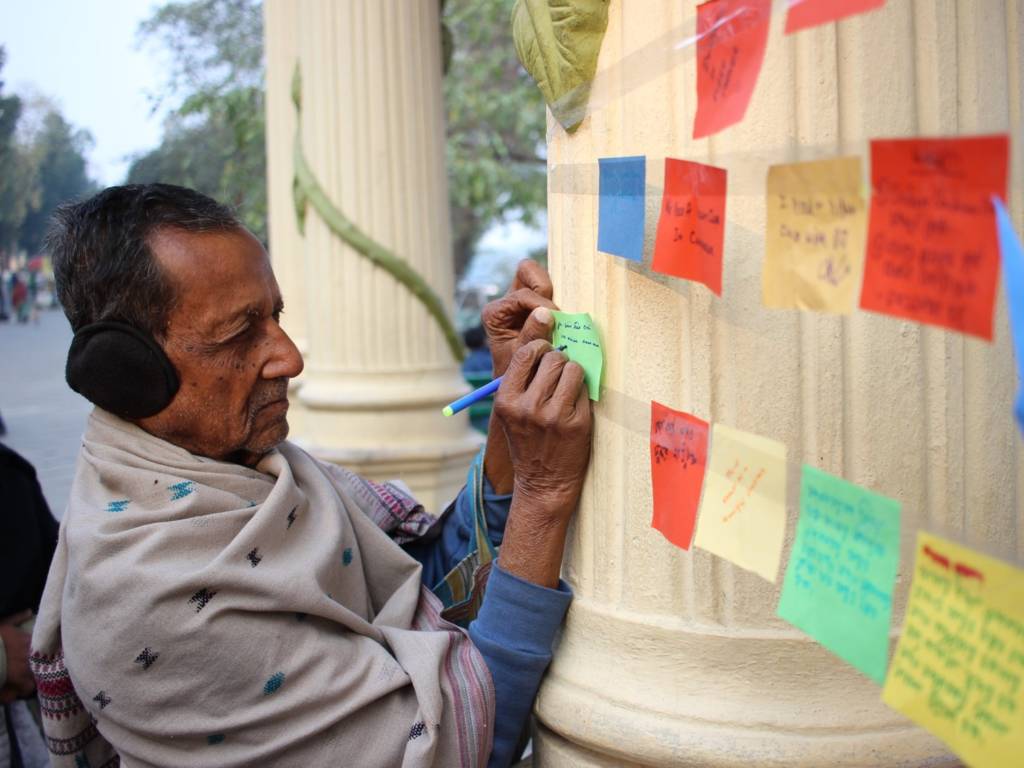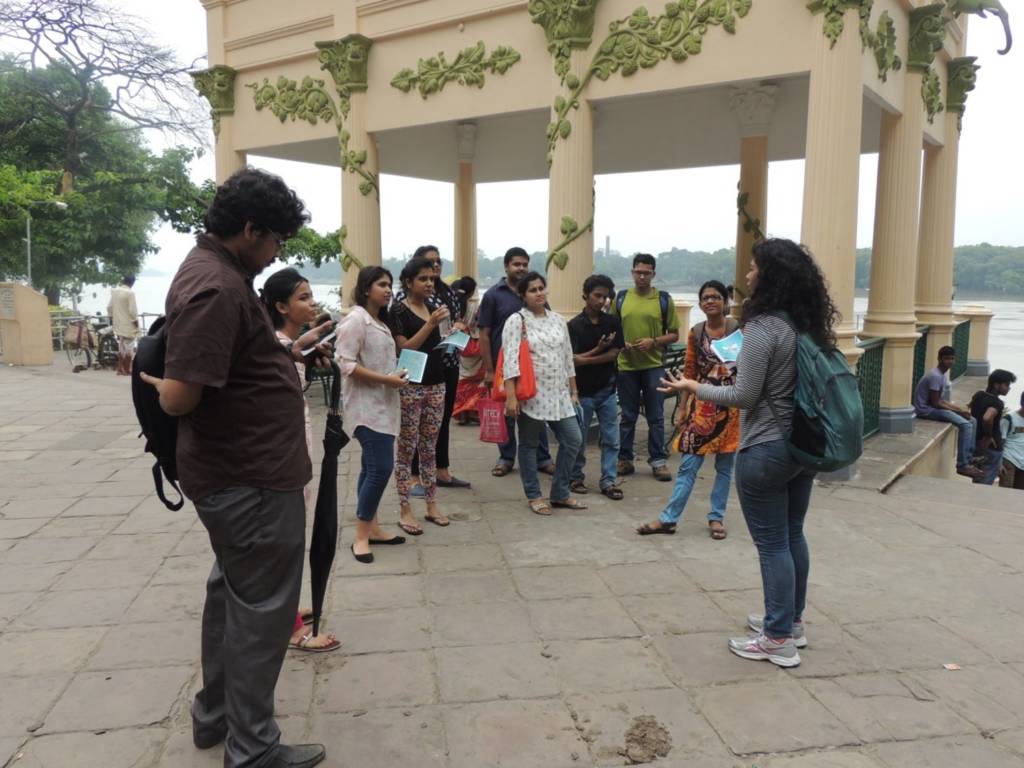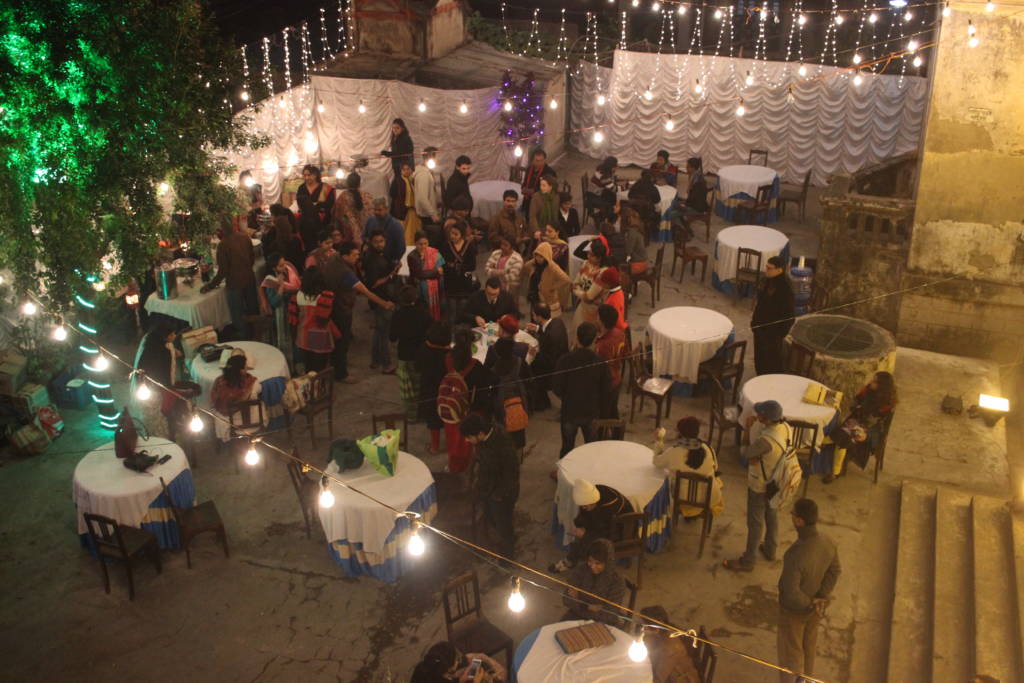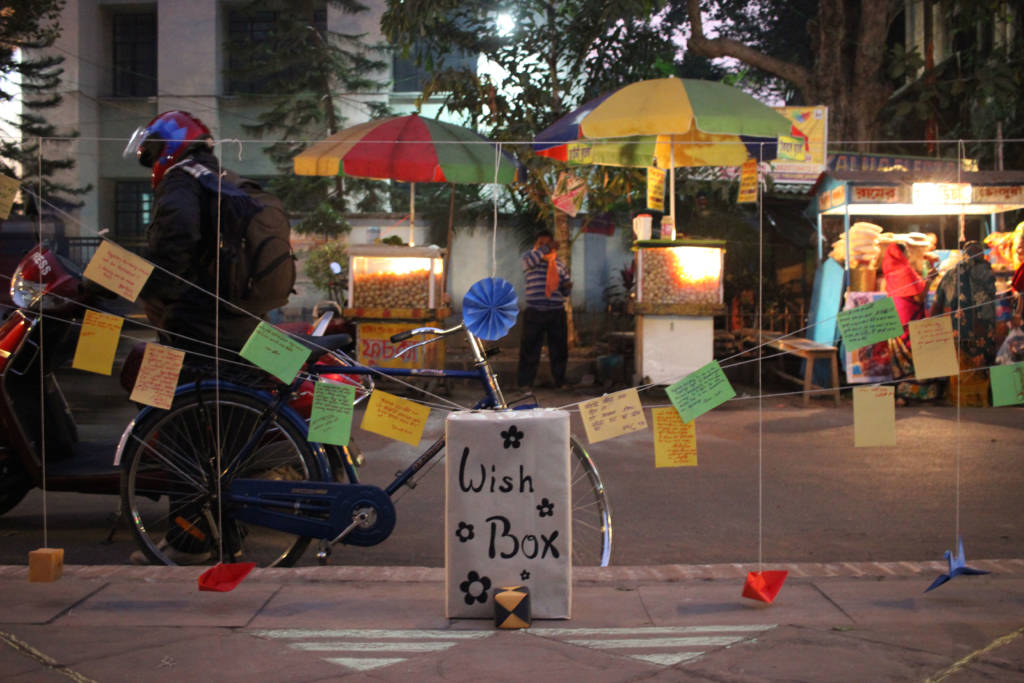
11.05.22

As the first Indian student on the European Urban Conservation course at the University of Dundee in 2006, a question I was often asked was, did I never intend to go back to India? Why would I want to study a course in European Urban Conservation when I wanted to work in India? It was a good question, and one to which the answer became clearer to me as I spent the next 15 years building a practice around shared Indo-European history, culture and heritage.
The most important lesson I took back to India from my time in Dundee was the role citizens could play in heritage conservation. Shadowing Neil Grieve of the Tayside Building Preservation Trust on site visits in the city as well as the countryside, attending community meetings and engaging with local authorities was very rewarding. To an outsider, the role of the third sector in the field of research, citizen initiatives and engaging with the local governments was quite fascinating. I come from a context where urban planning, urban design and architecture are still largely top-down, expert led disciplines. Working in India with a nearly non-existent third sector, as well as very powerful state presence and a thriving private sector, building bottom-up initiatives for heritage conservation is indeed thoroughly challenging. Reflecting on my experience, I can safely say that the training and perspective I received at Dundee was a turning point for me in developing my own methodology of citizen-level participation in urban heritage conservation in India.
One of the projects that my architectural practice has been involved with since its inception has been the valorisation of French heritage in India, in particular Chandernagore West Bengal. In the course of our decade long engagement, the project evolved from focussing on remains of French heritage in India to being recognised as Indo-French heritage with contribution of both cultures. In the current environment where narratives of decolonisation are prominent in every discussion, this project shows that there is much to learn about diverse perspectives, methodologies, and ways of approaching cultural heritage from both global as well as local contexts.
Chandernagore is an erstwhile French settlement about 40km from Calcutta on the banks of the river Hooghly. The heritage of Chandernagore is unique; morphologically a French town with an Indian heart, the architecture is a melange of both Indo-European sensibilities. Our team of young architects began the project as heritage experts in 2010 with the aim of documenting this Indo-French heritage, building our methodologies on a community-led mapping approach, something which was very nascent in India at the time. The mapping resulted in a listing of 99 buildings of heritage value, but given that there were no legislative mechanisms nor any funds to protect them, this mapping remained nothing more than a pretty catalogue. Frustrated by the lack of action towards the preservation of this shared cultural heritage, in 2015 we launched a digital project called Heritage & People of Chandernagore, supported by seed funding from the Vielles Maison Francaise, a Paris based NGO, and Les Amis du Patrimoine Pondichérien (APP).

This initiative was designed as a collaborative mapping project with the objective of not only identifying the built heritage of the town, but also the intangible heritage that the local community perceived as their heritage. A call for applications was placed on social media for ‘citizen historians’: enthusiasts who were interested in volunteering and collaborating on generating historical narratives of Chandernagore. Many students from the town and nearby areas—particularly students of history from Chandernagore College, Presidency University and Jawaharlal Nehru University—joined the project. Their task entailed door-to-door collection of oral histories gathered either on video or in written format. The citizen historians then added their blurb on the project blog, which was widely shared on social media, attracting many comments and suggestions.
The project’s website was designed so that information could be crowdsourced from other users; however, it became evident that the majority of the town’s population was not digitally savvy and did not own smartphones. The strategy was therefore modified from being dependent on individuals to that of being technically assisted by citizen historians who were encouraged to collect memories and use their personal devices (smartphones and desktops) to upload the content on behalf of the community.
Fairly early on in the project we realised that strategies that worked in metropolitan areas were failing miserably in the town. Members of the local communities were not interested in being part of workshops, even if they were free and open to all. Understanding this mindset, we tweaked our engagement process to include competitive engagements; we curated around the theme of ‘Heritage & People of Chandernagore’ and included activities such as painting, creative writing, quizzes and games (brick-by-brick Lego). We also created a Franco-Bangla cuisine competition between the homemakers in the town which helped develop camaraderie among townsfolk around heritage matters. On Independence Day weekend in 2015, a temporary stall was set up at the Strand, a prominent and popular public space in the town. Passers-by and children were invited to come and engage with the citizen historians and volunteers. A treasure hunt was designed and organised based on the heritage of Chandernagore, and school children were invited to come and play the game and learn more about their town.
This initiative was supplemented in 2018 by an artistic project known as ‘Know Your Indo-French Heritage’ as part of the Bonjour India Festival. 32 Indian and French students engaged with the local community to come up with ideas for the dilapidated buildings and historic spaces over seven days through a format built around informal discussions, popularly known as adda,s, in courtyards of people’s homes. Pop-up gastronomical events from Franco-Bangla cooking were led by local women, and students created pop-up art installations inviting people to engage with the vision of the town. An open-air exhibition was organised for the town’s decision makers, as well as the townsfolk, on the ideas for the future possibilities. This is a rare phenomenon in the Indian context which led to the signing of an historic memorandum of understanding between the Government of India and France for the restoration of French heritage along the Strand in Chandernagore in 2019.

In 2020, just before the pandemic hit, we worked on another seven-day workshop with French and Indian students focused on re-imagining the most important public space in the town, the Strand. Students worked with local makers in building on-the-ground pop-up installations of street furniture in sustainable materials such as jute-fibre and bamboo. The project was supported by the local government and presented an opportunity to directly touch the lives of the local people. We continue work through a pilot project on the restoration and reuse of a dilapidated building on the Strand as a community resource in collaboration with the local stakeholders. Keeping in mind the sustainability of this initiative, we are in the process of creating a Citizen’s Trust much on the lines of the Building Preservation Trust, to support the community and local governments take to care of their own heritage.
One of the key lessons from this decade long engagement has been the use of digital tools and social media to build a campaign and mobilise local communities. We are advocates of open-source technologies and all of our digital work has been built on freely available software. The methodology has to be tweaked for the Indian context based on local perceptions, mindset and culture, and has required constant engagement, which becomes very challenging when there is no possibility of public funding for such activities. Our work has been supported by the cultural arm of the French Embassy in India, providing an opportunity to co-create an Indo-European way of addressing shared cultural heritage.

Aishwarya Tipnis is an award-winning architect, educator and heritage conservationist based in New Delhi India. She is the recipient of the highest civilian honour Chevalier des Arts et des Lettres (Knight of Arts and Letters) for her work in the preservation of French Heritage in India. More of her work can be found at www.aishwaryatipnisarchitects.com and www.jugaadopolis.com.

If you would like to support us in creating even better content, please consider joining or supporting our Amps Community.